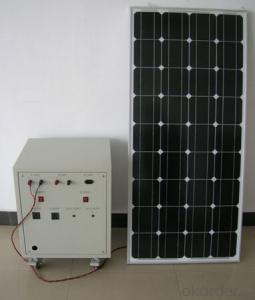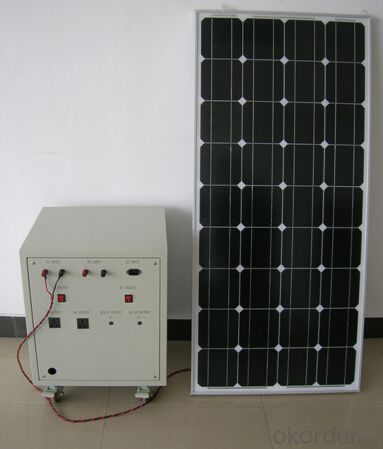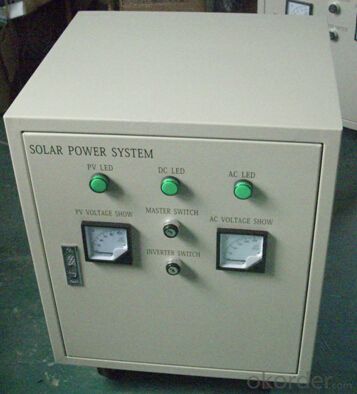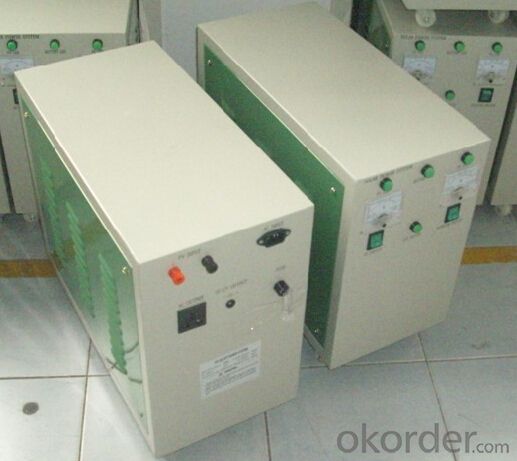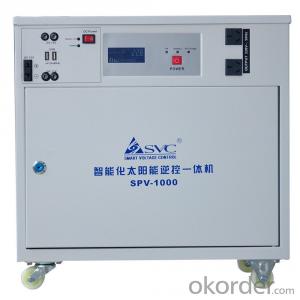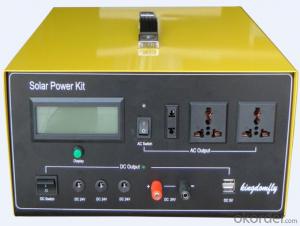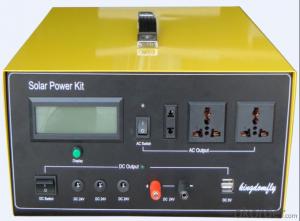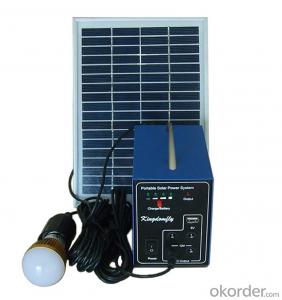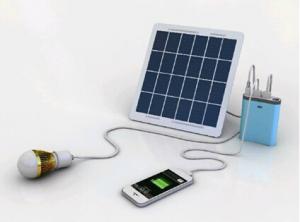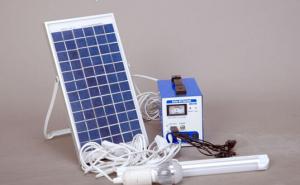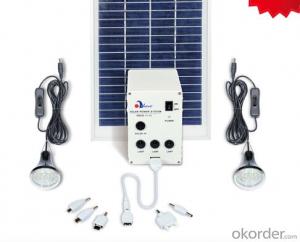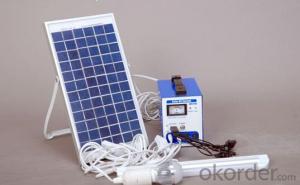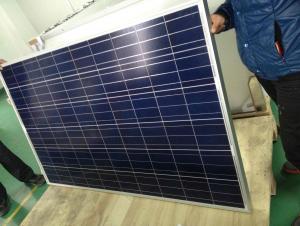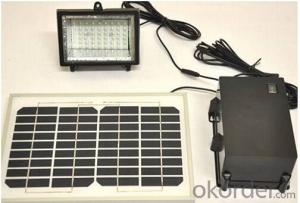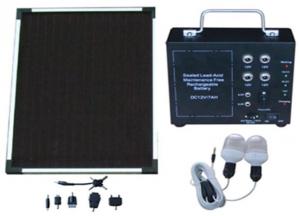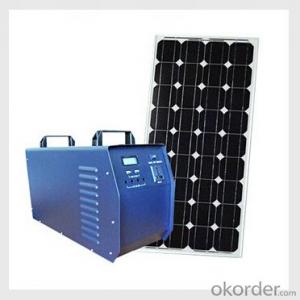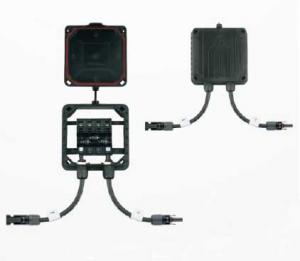Shreveport Residential Solar Energy Systems - CNBM Solar Home System Roof System Easy Installation Capacity-300W
- Loading Port:
- Shanghai
- Payment Terms:
- TT or LC
- Min Order Qty:
- 100 PCS
- Supply Capability:
- 500000 PCS/month
OKorder Service Pledge
OKorder Financial Service
You Might Also Like
Introduction of Solar Energy
In the last two decades, photovoltaics (PV), also known as solar PV, has evolved from a pure niche market of small scale applications towards becoming a mainstream electricity source. A solar cell is a device that converts light directly into electricity using the photoelectric effect. The first solar cell was constructed by Charles Fritts in the 1880s. In 1931 a German engineer, Dr Bruno Lange, developed a photo cell using silver selenide in place of copper oxide. Although the prototype selenium cells converted less than 1% of incident light into electricity, both Ernst Werner von Siemens and James Clerk Maxwell recognized the importance of this discovery. Following the work of Russell Ohl in the 1940s, researchers Gerald Pearson, Calvin Fuller and Daryl Chapin created the crystalline silicon solar cell in 1954. These early solar cells cost 286 USD/Watt and reached efficiencies of 4.5–6%. By 2012 available efficiencies exceed 20% and the maximum efficiency of research photovoltaics is over 40%.
Introduction of Solar Home System
Solar Home System is composed by Solar Panels, Inverters, Charger Controller, Battery, Cable, Mounting Bracket, which is applied to produce electricity for home use.
Solar Home System is quite suitable product in urban area and the place which is short of electricity. As the cost of solar products reduced, more and more family can bear the charge of solar products. These products apply to schools, hospitals, public halls and private housing, communication stations, weather station. Also can use as household appliances, lighting, communications equipment, meteorological equipment.
Our company’s main target is to make every family can use cheap solar energy and enjoy the new innovation of modern science and technology.
Picture of Our Factory

Working Principle of Solar Home System
This is an off-grid solar system which uses batteries to store the solar energy, at the same time, the solar system can be connected with the grid for utilization of grid power. The solar system uses battery power in priority, but when sunshine is not so good or loads consumption is too big which caused the battery power inadequacy, then the system can switch automatically to grid power supply. Meanwhile, the system can charge the batteries with grid power until batteries are fully charged. Then the solar system will switch back to battery power supply.
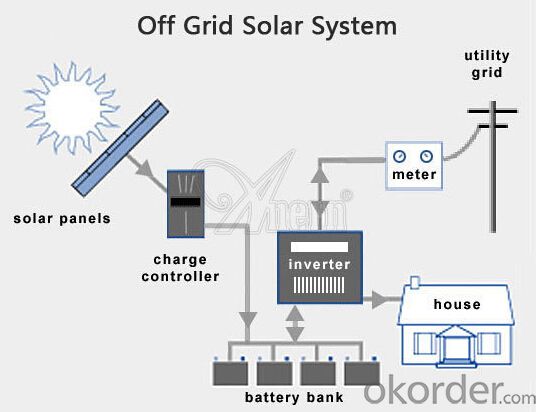
Product Details of Solar Home System
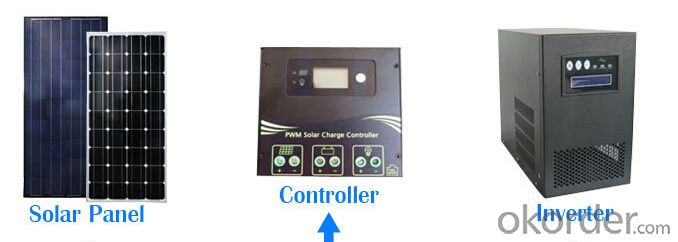
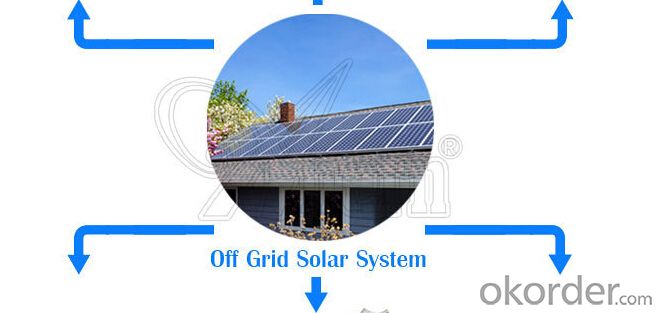

Specification of Solar Home System
Technical data: | |||||||||
Inverter | Rated load power | 1000W | |||||||
Output wave | Pure sine wave | ||||||||
Input voltage | 24V | ||||||||
Output voltage | DC:12V | ||||||||
Output frequency | 50HZ/60HZ | ||||||||
Precision of output frequency | ±6% | ||||||||
Solar panel | Pmax | 150W*2PCS | |||||||
Vmp | 36V | ||||||||
Imp | 8.34A | ||||||||
Charger | Charger voltage & current | 24V/20A | |||||||
Battery | Capacity | 12V100AH*2PCS | |||||||
Power box | Spray paint iron box,with input,output, ammeter,voltmeter,master switch and so on. | ||||||||
Package data: | |||||||||
Part | Size (L*W*H mm) | Weight (kg) | 20' (pcs) | 40' (pcs) | |||||
Power box | 580*520*540 | 60 | 84Sets | 200Sets | |||||
Solar panel | 1500*700*90 | 24 | |||||||
Solar panel bracket |
|
| |||||||
Loading electrical equipment(For consult) | |||||||||
Name of Load | Power(W) | Quantity | Working Time per Day (H) | Working Days | |||||
Color TV | 65W | 1 | 6 | 3 days | |||||
Satellite TV Receivers | 25W | 1 | 6 | 3 days | |||||
lamp | 11W | 2 | 8 | 3 days | |||||
Other | 150W |
| 2 | 3 days | |||||
Advantage of Our Solar Home System
1 Excellent Performance: Our Solar Home System is composed by Brand Standard Kits with high quality. Our solar system has the advantage of high efficiency and stable operation. We can ensure our product with a long life period.
2. Small Orders Accepted: We can accept small orders as our customer’s trial order.
3. Guarantee/Warranty: We supply 10 Years Product Warranty and 25 Years Performance warranty.
4. Warehouse: We have warehouse overseas which can bring great convenience to our customer to pick up the products.
FAQ
Q: You are a manufacturer or Trader?
A: We are a Group corp. with 1GW capacity, which is Okorder’s registered VIP Supplier, enjoy Okorder’s Financial Guarantee.
Q: Required mainly certificates (CE&IEC/TUV/RoHS)?
A: Our products are certificated by CE RoHS, IEC, C-tick etc.
Q: Your main exported market is?
A: Main markets of our products is: South-east Asia, Mid-east, Arica, East Europe and Latin America.
- Q: Can solar energy systems be used in areas with limited construction materials?
- Yes, solar energy systems can be used in areas with limited construction materials. Solar energy systems can be designed to be simple and require minimal construction materials. For example, small-scale solar systems like solar panels or solar lanterns can be easily installed and used in remote areas with limited resources. Additionally, innovative solutions like solar cookers or solar water heaters can also be implemented in areas with limited construction materials, providing clean and sustainable energy alternatives.
- Q: Can solar energy systems be financed or leased?
- Certainly, it is possible to finance or lease solar energy systems. Various companies provide financing choices for individuals and enterprises interested in installing solar panels and similar energy systems. These financing alternatives enable customers to divide the system's cost over a specific duration, thus rendering it more economically feasible. Furthermore, leasing arrangements are attainable whereby a third-party company owns and maintains the solar panels, and the customer pays a monthly fee to lease the system. Consequently, such financing and leasing alternatives have enhanced the accessibility of solar energy to a broader spectrum of individuals, significantly contributing to the rapid expansion of the solar industry in recent years.
- Q: Can a solar energy system be installed in a coastal area?
- Yes, a solar energy system can be installed in a coastal area. In fact, coastal areas can be ideal locations for solar installations due to their abundant sunlight and proximity to the ocean. However, there are certain factors that need to be considered when installing a solar energy system in a coastal area. One of the primary considerations is the corrosive nature of the salty air in coastal regions. Salt can accelerate the degradation of certain components of a solar system, such as metal frames, electrical connections, and even the solar panels themselves. To combat this, it is essential to use corrosion-resistant materials and regularly clean and maintain the system to remove any salt buildup. Another consideration is the potential impact of strong winds and storms that are common in coastal areas. Solar panels and mounting structures need to be designed and installed to withstand these extreme weather conditions. Reinforced anchoring and proper installation techniques can help ensure the stability and durability of the system in high wind areas. Additionally, it is important to assess the impact of coastal erosion or flooding on the solar energy system's location. Proper site selection and elevation can help minimize the risk of damage from these environmental factors. Despite these challenges, with proper planning, design, and maintenance, a solar energy system can be successfully installed and operated in a coastal area. The benefits of harnessing the abundant sunlight in these regions can outweigh the potential challenges, making solar energy a viable and sustainable option for coastal communities.
- Q: Can solar energy systems be used in areas with limited access to solar surge protection devices?
- Yes, solar energy systems can be used in areas with limited access to solar surge protection devices. While surge protection devices are important for protecting solar panels and other system components from power surges and voltage spikes, there are alternative methods to mitigate the risks. These can include using high-quality solar inverters with built-in surge protection, implementing proper grounding techniques, and adhering to best practices in system design and installation. Although having access to surge protection devices is ideal, it is not a definitive requirement for the deployment of solar energy systems in areas with limited access to such equipment.
- Q: Can solar energy be used at night?
- No, solar energy cannot be directly used at night as it relies on sunlight to generate electricity. However, energy storage systems such as batteries can be used to store excess solar energy during the day and provide power during the night.
- Q: Can solar energy systems be installed on any type of roof?
- Yes, solar energy systems can generally be installed on any type of roof, including flat roofs, sloped roofs, metal roofs, asphalt shingle roofs, and tile roofs. However, the specific design and installation requirements may vary depending on the roof type, structure, and condition. It is advisable to consult with a professional solar installer to determine the feasibility and suitability of installing a solar energy system on a specific roof.
- Q: Can solar energy systems be installed on airports or transportation hubs?
- Yes, solar energy systems can definitely be installed on airports or transportation hubs. In fact, airports and transportation hubs are ideal locations for installing solar panels due to their vast open spaces and availability of sunlight. Installing solar energy systems in these areas can significantly reduce their carbon footprint, lower energy costs, and promote sustainability in the transportation sector. Additionally, airports and transportation hubs usually have large rooftops and parking areas that can accommodate solar panels, making them suitable locations for generating clean and renewable energy.
- Q: Can solar panels be installed on different surfaces like glass or metal?
- Yes, solar panels can be installed on different surfaces like glass or metal. In fact, solar panels are commonly installed on glass surfaces, such as windows or skylights, to maximize sunlight exposure. Additionally, solar panels can also be mounted on metal roofs or other metal structures. The key requirement is ensuring a sturdy and secure installation to support the weight of the panels and maximize their efficiency.
- Q: Can solar energy systems be used in remote locations?
- Yes, solar energy systems can be used in remote locations. Since solar energy relies on sunlight, it can be harnessed and utilized in virtually any location as long as there is access to sunlight. This makes solar energy an excellent option for powering remote areas where traditional electrical infrastructure may be limited or nonexistent. Additionally, advancements in solar technology have made it more efficient and cost-effective, further enabling its use in remote locations.
- Q: Can solar energy systems be used in areas with limited access to solar energy research facilities?
- Yes, solar energy systems can be used in areas with limited access to solar energy research facilities. Solar energy systems are designed to harness sunlight and convert it into usable energy, and their operation does not depend on the availability of solar energy research facilities. The technology and knowledge required to install, operate, and maintain solar energy systems are widely available, allowing them to be used in various locations regardless of access to research facilities.
Send your message to us
Shreveport Residential Solar Energy Systems - CNBM Solar Home System Roof System Easy Installation Capacity-300W
- Loading Port:
- Shanghai
- Payment Terms:
- TT or LC
- Min Order Qty:
- 100 PCS
- Supply Capability:
- 500000 PCS/month
OKorder Service Pledge
OKorder Financial Service
Similar products
Hot products
Hot Searches
Related keywords
